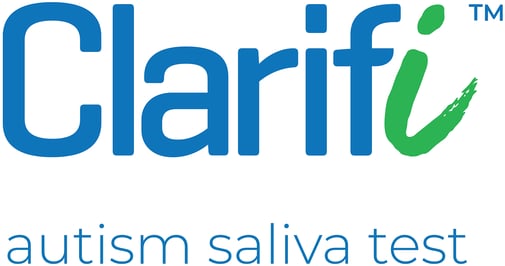
- December 24, 2019
- clarifiasd
- No Comments
- News
New Autism Saliva Test Now Available
A new saliva test for autism spectrum disorder is now widely available throughout the United States for children as young as 18 months until the 7th birthday.
The test, called Clarifi ASD, is the first of its kind epigenetic test used to aid in the diagnosis of autism, as well as the first product to launch from the Quadrant Biosciences proprietary Clarifi Epigenetic Diagnostic Platform. This novel approach in the early detection of autism spectrum disorder promises to have a significant impact on the way clinicians approach the diagnosis and treatment of ASD.
The Science Behind the Test
Clarifi is not a genetic test. Rather, it is the product of game-changing scientific advancements in the area of epigenetics; the factors that influence how genes are turned on and off. It is well understood that the interaction of genetic and environmental factors play a role in the development of autism spectrum disorder. Quadrant Biosciences’ peer-reviewed, clinically validated research, in collaboration with SUNY Upstate Medical University and Penn State College of Medicine, discovered certain RNA molecules that reflect interactions between a patient and their environment and can differentiate children who have autism from their peers.
Given that there were previously no identified biomarkers for autism that have strong clinical utility, these findings were groundbreaking. The Clarifi ASD test was designed to measure the activity of genes, including those from the microbiome, by measuring these specific RNAs in the saliva. This integrated approach represents the first objective saliva-based test for autism.
The Clarifi Process
Clarifi ASD is intended for children ages 18 months through 6 years of age where there is a suspicion of autism. In those cases, a health care provider can administer the Clarifi ASD saliva swab during an office visit. The saliva swab takes only seconds to perform, and the sample is then sent to a CLIA-certified lab where the RNA, microbiome, and child’s previous health information are analyzed using a machine learning algorithm. In three to six weeks, a report is sent back to the ordering health care provider, who will review results with the family.
What do the Clarifi ASD results look like?
Results are presented in a report that provides an autism probability scale, a summary of the science behind the test, and links to parent resources. The Clarifi ASD result is not intended to be a standalone diagnosis.
According to Kayla Wagner, Vice President of Product Management at Quadrant Biosciences, “the probability result is meant to be interpreted in the context of the child’s medical history and other clinical assessment information to expedite the diagnostic process and allow more children to access critical intervention services early in development.”
How Accurate is the Test?
One of the fundamental tools used to assess the overall accuracy of a molecular diagnostic test is called the “Area Under the ROC Curve” or AUC. The AUC takes into account both sensitivity and specificity of a test, essentially a reflection of how good the test is at distinguishing between patients with a condition and those without. The Clarifi ASD test has an AUC of 86%. Links to published research on the test are available here.
How to Get the Test
Clarifi ASD must be ordered and administered by a health care provider. Interested parents can visit the Get Clarifi page for an informational PDF to download and share with their child’s doctor so they may order the test. For clinicians interested in bringing Clarifi ASD to their practice, the Get Clarifi page offers instructions on how providers may order the test. Currently, this autism saliva swab test is available in every state except New York.
Why hasn’t my child’s doctor heard about this autism test?
“We get that question frequently,” says Dave MacLean, Chief Marketing Officer of Quadrant Biosciences. “And it’s completely understandable for a couple of reasons. First, Clarifi ASD has only been on the market for a short time, and thus health care providers and parents are still just learning about it. Second, the test – and the epigenetic science behind it – represents a completely new, biological approach to aid in the diagnosis of autism. As we continue to educate clinicians and parents about the test and the credible science behind it, we fully expect that these types of questions and concerns will greatly diminish.”
The Final Word
“Children are missing the opportunity for early intervention critical to support positive outcomes and meet developmental milestones,” explains Quadrant Biosciences Founder and CEO Rich Uhlig. “Our overarching mission is to identify children with autism early to move the average age of diagnosis from over four years of age to the second year of life. The Clarifi ASD test can determine the probability of a child having autism as early as 18 months. With this groundbreaking technology, health care providers can identify children with a high likelihood of an autism diagnosis to expedite access to services as soon as possible.”

